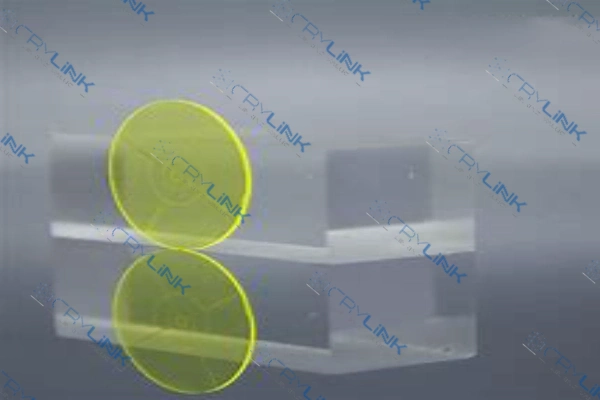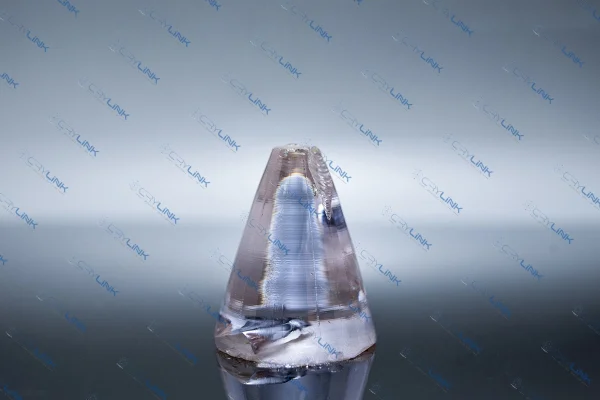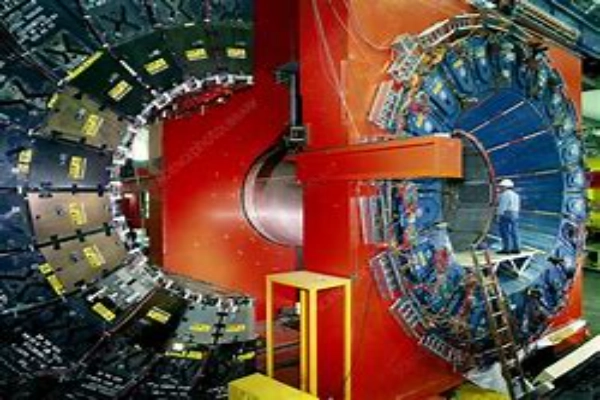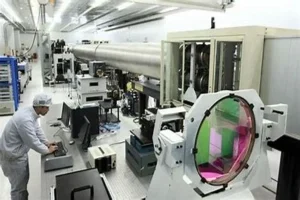Introduction
Yttrium Aluminum Garnet (YAG) crystals have been instrumental in modern technological advancements. The Nd:YAG, which stands for Neodymium-doped Yttrium Aluminum Garnet, has been a renowned variant for a plethora of applications, especially in laser systems. However, as technology progresses, the discovery and utilization of other YAG variants have emerged, demonstrating a variety of unique properties and broadening the scope of applications. In this comprehensive overview, we dive into some of these novel YAG variants and their remarkable potential.

Ce:YAG – The Scintillation Prodigy
The world of material science constantly surprises us with innovations that propel industries forward. One such marvel is Ce:YAG, otherwise known as Cerium-doped Yttrium Aluminum Garnet. A noteworthy member of the garnet family, this crystal, enriched with cerium ions, has positioned itself as an irreplaceable asset in many technological applications.
When we talk about the scintillation properties of Ce:YAG, we’re essentially addressing its unparalleled ability to detect high-energy particles and photons. Scintillation is the process of absorbing high-energy photons and re-emitting them as visible light. The efficiency and rapidity of this process in Ce:YAG make it a standout compared to other materials. Its broad range of transparency, spanning from ultraviolet to near-infrared regions, ensures that the crystal can operate across a diverse spectrum of wavelengths. This broad operational range is a testament to its flexibility in various applications.
Ce:YAG’s speed, characterized by its swift decay time, is particularly vital for applications that require rapid data acquisition or high-frequency operations. This aspect ensures minimal lag between the absorption of energy and its re-emission, making it invaluable in scenarios that require real-time feedback or monitoring. In industries like high-energy physics, where every nanosecond counts, this attribute of Ce:YAG is a game-changer.
Another significant property of Ce:YAG that merits discussion is its remarkable thermal stability. In layman’s terms, this means that the crystal retains its structural and operational integrity even under elevated temperatures. This resilience isn’t just about withstanding heat; it also signifies the material’s ability to function consistently in fluctuating temperatures, a property that becomes crucial in demanding environments. Imagine space missions where equipment is subjected to extreme cold and then suddenly exposed to intense sunlight; materials like Ce:YAG that can endure such transitions are indispensable.
Speaking of applications, Ce:YAG’s significance isn’t limited to one field. Medical imaging, for instance, demands precision. The safety and efficacy of many medical procedures rely on the accuracy of images obtained, be it in detecting anomalies or guiding surgeries. Ce:YAG, with its exceptional scintillation properties, provides such precision. Similarly, in the realm of high-energy physics, especially in large hadron colliders, detecting particles accurately is the foundation of groundbreaking discoveries. Ce:YAG’s rapid response ensures that no data point is missed. And as for space applications, resilience is the name of the game. With the vacuum, temperature fluctuations, and high-energy cosmic particles, you need a material that stands its ground – and Ce:YAG fits the bill perfectly.
In conclusion, Ce:YAG, with its unique blend of properties, is truly a prodigy in the world of scintillating materials. As industries continue to evolve, the demand for such versatile and robust materials will only grow, making the future of Ce:YAG shine even brighter.

Cr, Tm, Ho:YAG – The Trifecta for Advanced Laser Systems
The realm of laser technology has seen monumental advancements in recent years, a significant portion of which can be attributed to the groundbreaking properties of doped Yttrium Aluminum Garnet (YAG) crystals. Among these, the trio of Chromium (Cr), Thulium (Tm), and Holmium (Ho) doped YAG crystals stand out, acting as the backbone for a multitude of advanced laser systems.
The inherent versatility of these doped crystals is truly commendable. With a broad emission spectrum, they cater to a diverse array of applications, making them a favorite for researchers and industries alike. From the visible spectrum to the deeper infrared regions, these crystals have an answer for almost every wavelength requirement. This flexibility ensures that specific tasks, whether it’s a medical procedure or an industrial function, can be optimally executed with the right wavelength selection.
Durability is another significant advantage of the Cr, Tm, Ho:YAG group. Lasers, by nature, deal with high-energy operations, and it’s imperative that the core components can endure such conditions. With high damage thresholds, these doped crystals don’t just survive but thrive in these environments. This robustness ensures that laser systems equipped with these crystals have an extended operational life, reducing the frequency of replacements and ensuring consistent performance over time.
Efficiency, in the context of these crystals, revolves around their stellar capability to convert pump energy into laser output. This means that for the same amount of input or energy, these crystals can produce higher laser outputs, making the entire system more energy-efficient. As industries globally push towards sustainability and energy efficiency, the significance of such properties cannot be overstated.
When we talk about real-world applications, the possibilities are vast. In the medical sector, where precision is paramount, these crystals are embedded in surgical lasers, aiding surgeons in intricate procedures across dermatology, urology, and more. The precision and controlled energy outputs ensure patient safety while achieving desired outcomes. In the industrial realm, tasks like cutting, engraving, and welding demand accuracy and minimal damage to surrounding areas. Thanks to the attributes of Cr, Tm, Ho:YAG, industries can achieve these goals with ease. On the defense front, the robustness and versatility of these crystals come to the forefront. Whether it’s for range-finding in challenging terrains, designating targets in a battlefield, or enabling remote sensing capabilities, these crystals have proven their mettle.
To encapsulate, the emergence of Cr, Tm, Ho:YAG crystals has been nothing short of revolutionary for the world of advanced laser systems. Their combination of versatility, durability, and efficiency addresses the current needs of various sectors while paving the way for future innovations. As laser technology continues its upward trajectory, the role of these doped crystals is set to become even more central, propelling them to greater heights in scientific and industrial applications.

Beyond the Known: The Future of YAG Variants
The dynamic world of Yttrium Aluminum Garnet (YAG) crystals is marked by continuous evolution. The story of their progression, from the ubiquitously known Nd:YAG to the intricate discoveries of Ce:YAG and Cr, Tm, Ho:YAG, is a testament to the relentless spirit of scientific inquiry. Each variant brought forth a new realm of possibilities, addressing challenges and bridging gaps in myriad applications, from medical procedures to advanced laser systems.
But the canvas of YAG innovation is far from being fully painted. As industries grow and technologies advance, the requirements from these crystals also shift. This drives the global scientific community to push boundaries, experimenting with new doping elements, and fine-tuning crystalline structures to derive unparalleled properties. The goal? To achieve higher efficiencies, broader emission spectra, and even more resilient crystals that can withstand the rigors of futuristic applications.
It’s this exciting intersection of demand, discovery, and innovation that promises a future brimming with novel YAG variants. As we peer into the horizon, one thing is clear: the chapter of YAG exploration is far from over, and the upcoming pages hold revelations that might redefine industries and challenge what we currently perceive as limits.

A Comparative Look: Nd:YAG and its Siblings
Nd:YAG, with its storied history and extensive application, has indeed been the poster child for the world of YAG crystals for a significant time. Its versatility, high thermal conductivity, and broad tunability made it an industry favorite. However, in the shadow of its success, new siblings have emerged, each carrying unique attributes that cater to evolving demands.
Ce:YAG, for instance, shines brightly with its exemplary scintillation properties, making it a prime choice for high-resolution imaging and particle detection. On the other hand, the trio of Cr, Tm, Ho:YAG, ushered in a new era for advanced laser systems, particularly with their adaptability in emission wavelengths and high damage thresholds. Each of these variants, in their own right, has expanded the palette of possibilities, allowing industries to choose the perfect fit based on precise requirements.
In this ever-expanding YAG family, while Nd:YAG remains a revered elder, the newer members are fast establishing their significance. Together, they present a diversified arsenal, ensuring that the world of optics and photonics continues to evolve, innovate, and break barriers.

Conclusion
The world of Yttrium Aluminum Garnet crystals is ever-evolving. Beyond the well-trodden path of Nd:YAG lies a realm of diverse and promising YAG variants like Ce:YAG, Cr, Tm, and Ho:YAG. Their unique properties and applications signify a bright future, with potential yet to be fully realized. As technology steers into uncharted waters, the relevance and significance of these YAG variants are set to rise, heralding a new era of innovation and discovery.
FAQs
- What makes Ce:YAG suitable for medical imaging?
- Ce:YAG’s exceptional scintillation properties, quick decay time, and broad transparency range make it apt for high-resolution medical imaging.
- How do Cr, Tm, Ho:YAG crystals differ from Nd:YAG?
- While Nd:YAG has been a staple for various applications, Cr, Tm, Ho:YAG crystals offer a diverse range of emission wavelengths and are tailored more towards advanced laser systems.
- Are there other YAG variants currently being researched?
- Yes, the quest for discovering new YAG variants continues, with scientists aiming to uncover crystals with unique properties to cater to evolving demands.
- Why are YAG crystals crucial for industrial applications?
- YAG crystals, especially the newer variants, offer precision, efficiency, and durability, making them ideal for tasks like cutting, engraving, and welding.
- Do YAG crystals have applications in space technology?
- Absolutely. Ce:YAG, for instance, is valued in space applications due to its thermal stability and resilience in extreme conditions.







